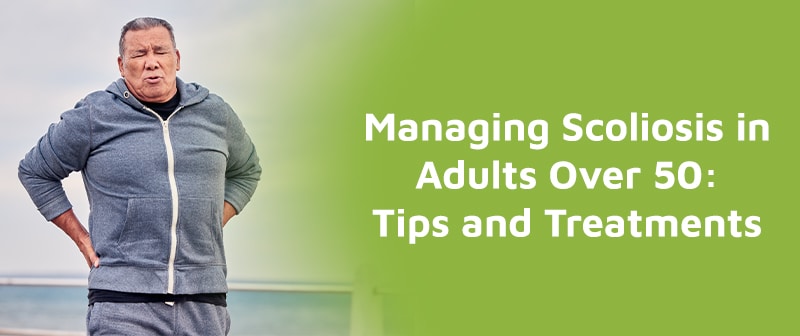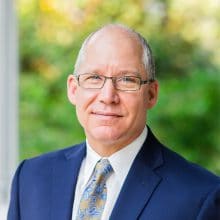
Scoliosis is a structural spinal condition that causes a loss of its healthy curves, and while it is more commonly diagnosed in children, it also affects adults. When it comes to adults over the age of 50, the rate of scoliosis increases due to spinal degeneration and degenerative scoliosis.
When it comes to managing scoliosis in adults over 50, the focus is on reducing curve sizes back to where they were prior to becoming painful, and increasing spinal support and stability; the spine can become increasingly unbalanced and unstable as conditions progress and the spine degenerates further.
Before getting to the specifics of adult scoliosis, let's first talk generally about how scoliosis affects different age groups.
When it comes to addressing scoliosis, patient age is a key factor.
Scoliosis is largely considered a childhood condition, and this is because it's more commonly diagnosed in children, and as the main spinal condition to affect school-aged children, it should always be taken seriously.
Patient age doesn't just indicate a patient's level of health and fitness; it also shapes how scoliosis can affect a patient, along with their treatment needs.
Scoliosis affects all ages from babies who are born with congenital scoliosis to infants, juveniles, adolescents, and adult scoliosis is diagnosed once skeletal maturity has been reached.
Patient age can shape progression and pain; as a progressive condition, scoliosis gets more severe over time, and the main trigger for progression is growth.
So the more growth a young patient has yet to go through, the more potential progression could also occur, and the more severe scoliosis is, the more complex it is to treat.
Adults will also experience progression, but generally at a slower rate because growth is no longer occurring; however, once spinal degeneration begins, adult scoliosis can progress at a faster rate.

In children, the main effects of scoliosis involve postural changes such as uneven shoulders and uneven hips, and in adults with scoliosis, the main condition effect is pain, and this is because scoliosis becomes a compressive condition once skeletal maturity has been reached.
Compression is uneven pressure, and in patients whose spines are still growing, the lengthening motion counteracts the compression of the spine and its surrounding nerves and muscles, but once growth stops, back pain and pain felt in the extremities due to nerve compression is common.
And what are the main types of scoliosis to affect adults?
There are two main types of scoliosis to affect adults, and the most common is idiopathic scoliosis, which are cases of adolescent scoliosis that weren't diagnosed and left untreated, progressing into adulthood and becoming noticeable once compressive and painful.
Adolescent idiopathic scoliosis is the most prevalent type of scoliosis overall, and it's diagnosed in adolescents between the ages of 10 and 18; because of the unpredictable and rapid growth spurts of puberty, this age group can progress quickly.
As adolescent idiopathic scoliosis isn't commonly painful, it can be hard to detect, particularly when mild as related postural changes can also be subtle, and mild scoliosis isn't associated with functional deficits.
So it's a common scenario that an adolescent can be unaware of their scoliosis until skeletal maturity is reached and the condition becomes painful; it's pain that brings most of my adult patients in for a diagnosis and treatment.
When it comes to adults over the age of 50, this age group is affected by the next most common type of scoliosis in adults: degenerative scoliosis.

In addition to age-related changes, the cumulative effect of certain lifestyle factors can also play a role in an older adult's spinal health: low activity levels, poor diet, carrying excess weight, chronic poor posture, lifting heavy objects incorrectly, and consuming excessive amounts of alcohol and/or smoking.
When the spine is degenerating, it most often starts with its intervertebral discs, and these spinal structures play many key roles in how the spine functions.
A healthy spine consists of vertebrae (bones) stacked on top of one another in a straight and neutral alignment, and an intervertebral disc sits between adjacent vertebrae.
The discs act as a cushion between vertebral bodies so they don't rub up against each other generating friction during activity; they are also the spine's shock absorbers, structural support, and combine forces to make the spine more flexible.
If a disc is degenerating, it tends to become desiccated, lose height, and change shape, and this impacts the position of adjacent vertebral bodies that attach to the disc in between, causing the spine to shift out of alignment, becoming unbalanced and unstable.
As degenerative scoliosis progresses, the spine will become more misaligned and increasingly unstable and rigid, making it more painful and less responsive to treatment.
So what is the goal when treating scoliosis in adults over 50?
When it comes to addressing degenerative scoliosis, the treatment goal is to achieve a curvature reduction on a structural level, but these curvature reductions don't have to be as significant as when treating childhood scoliosis because they don't have to counteract progression triggered by growth.
We always want to reduce the size of a scoliotic curve, but when it comes to older adults, the goal is to reduce it back to where it was before becoming painful, and along with pain management, increasing spinal support, stability, and flexibility are goals of degenerative scoliosis treatment.
Stiffness, weakness, and pain are symptoms of degenerative scoliosis, and as it progresses, postural shifts become more overt; patients can lose their healthy lower back curvature and develop an excessive middle/upper back curvature that's problematic.
As this occurs, the ribs are no longer aligned with the hips, and if left untreated and/or severe, this can cause the body to lean forward, making it increasingly difficult to stand up straight.
As pain and stiffness gets worse, there is less movement and motion within the spine, and this initiates the cyclical nature of spinal degeneration as less movement means poor circulation and less nutrients being absorbed by the spinal discs, bones, ligaments, and tissues.
So as the asymmetrical nature of scoliosis is what's causing the majority of its effects, to treat degenerative scoliosis, the spine's asymmetry has to be addressed so the cyclical nature of spinal degeneration is stopped and motion is restored.
As a CLEAR-certified scoliosis chiropractor, I follow the CLEAR Scoliosis Institute approach for addressing degenerative scoliosis, and this includes condition-specific chiropractic care that has the goal of reducing the size of the scoliotic curve on a structural level and improving the spine's alignment.
Physical therapy and scoliosis-specific exercises are key facets of treatment that work towards increasing a patient's core strength so the spine's surrounding muscles are better able to support the spine, taking pressure off it and its individual structures, and a spine that's more supported is a spine that's more stable and balanced.
Physical therapy and exercise can also help restore movement in the spine, breaking the cycle of degeneration and nutrient loss that occurs as the spine becomes increasingly rigid.
Through realigning the spine, the underlying structural nature of the condition is being addressed, and this is the best form of sustainable pain management, and when necessary, there are also pain medications and injections to help.
When it comes to addressing scoliosis in adults over the age of 50, this mainly involves cases of degenerative scoliosis, and while scoliosis is more commonly diagnosed in children, the actual rate of scoliosis is higher in the aging population, and this is due to spinal degeneration.
Regardless of severity, it's never too late to start treatment, but it is important to understand that as a progressive condition, the path of treatment is generally easier the sooner it's started.
Degenerative Scoliosis, also known as adult onset scoliosis and/or de novo scoliosis, can respond well to a conservative treatment approach that works towards slowing natural degeneration by improving the spine's symmetry, balance, stability, and flexibility.
Postural changes experienced by adults are often most noticeable when they bend forward, and as the spine's alignment is improved, so too are the related postural changes such as a pitched-forward posture.
Here at CLEAR, we prioritize the spine's natural strength and function and do so through an integrative treatment approach that combines the power of multiple scoliosis treatment disciplines.
While surgery can be recommended for adult scoliosis, spinal fusion is an invasive procedure that gets increasingly risky with age and each additional surgery.
Most patients with degenerative scoliosis, particularly those that start proactive treatment immediately following their diagnosis, can experience noticeable improvement that improves their overall quality of life, while preserving spinal strength and function.

CLEAR provides a unique and innovative way of understanding scoliosis. Sign up to receive facts and information you won’t find anywhere else.

I have been diagnosed with scoliosis per MRI. I am 72 years and now have decreased sensation L5-S1
dermatone pattern bilaterally. I am involed in regular PT and receiving traction 2x week which is helping. I have some urine incontinence. I originaly thought I had a right SI joint difunction/pain. I have recently moved to San Antonio Texas and am seraching for specific scoliosis chriropratic care. Do you have any suggestions for me?
Hello, Anna,
I commend you for being proactive with your health. I imagine the PT and traction you have been doing have somewhat helped to alleviate some of the symptoms of your scoliosis. Unfortunately, scoliosis care/treatment is not something taught in the chiropractic curriculum so the majority of chiropractors are unable to do much for this condition other than try to help manage symptoms. Our CLEAR Scoliosis Institute certified Doctors have extensive training in the biomechanics and treatment of the scoliotic spine and specialize in reduction, stabilization, and treatment of patients with scoliosis. I suggest contacting the nearest clinic to you for an evaluation and determine what can be done to best treat your spine. It looks like the CLEAR doctor nearest you is Dr. Collin Hilliard in Austin; you can contact him at 512-331-6751. Please let us know if we can be of further assistance. Best of luck.